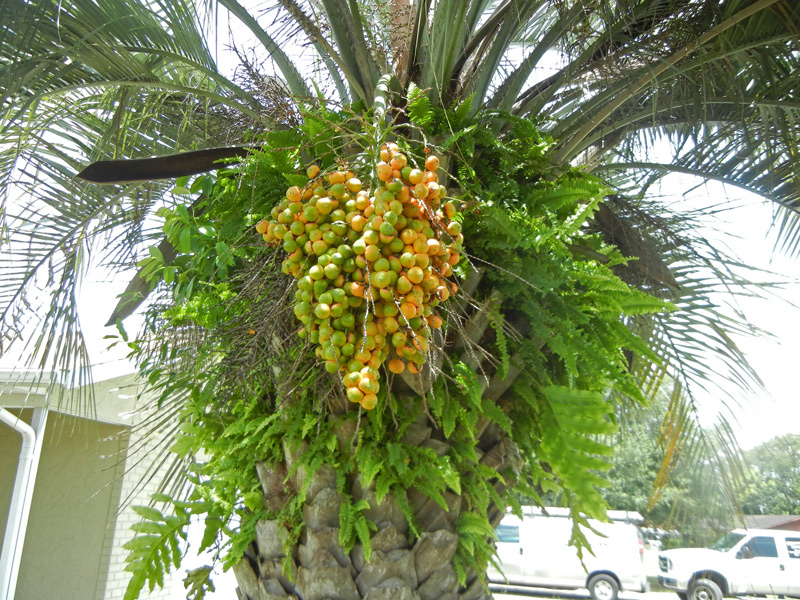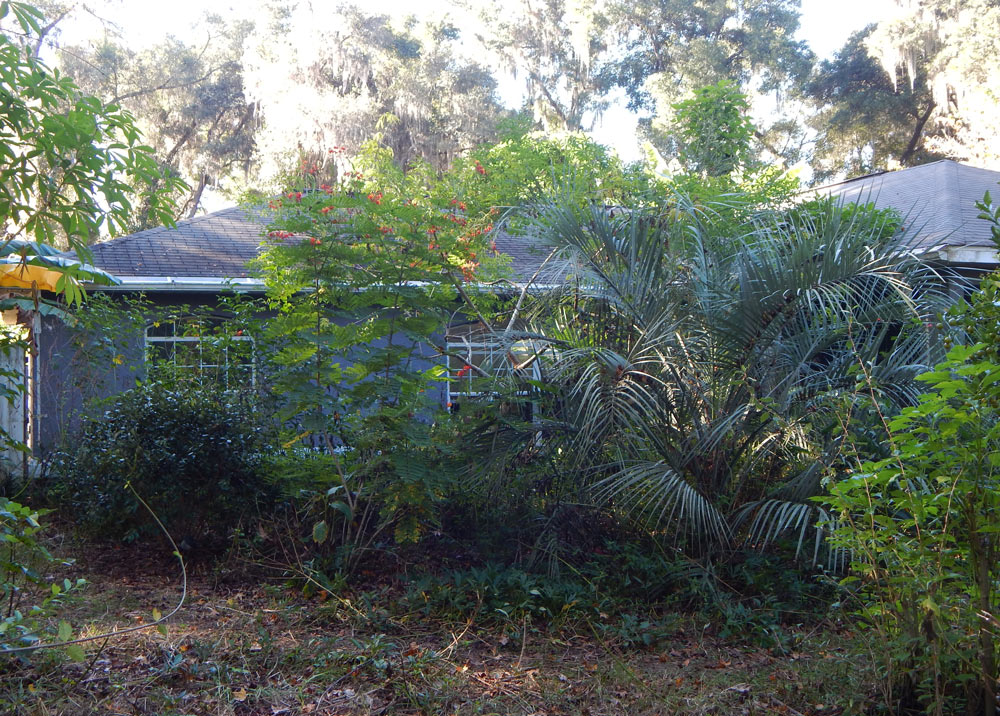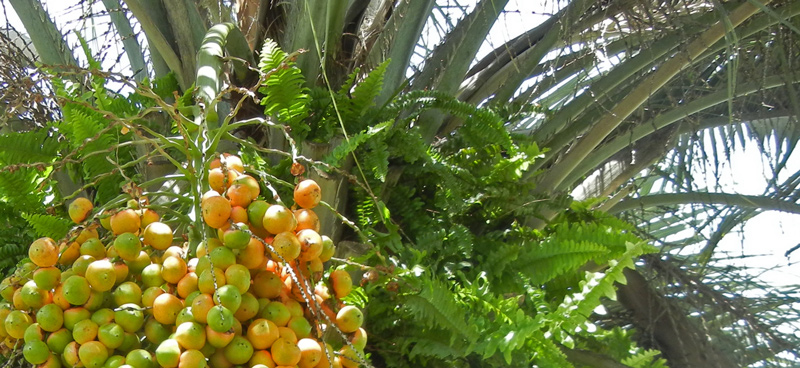A friend asks if a beautiful palm has edible fruit:
“There is a palm tree in the front yard of a house we bought in Ocala about 18 months ago. This year, it produced large clumps of a yellow-orange fruit that has a tough skin and a large seed inside each one. Pictures are attached.

Can you tell us what this is, and how to protect and use it? (The fruits spoil almost a quickly as they ripen.)”
I wrote back:
“That’s a pindo palm! Great fruit. We stew them into an absolutely delicious jelly with sugar to taste and jar them. Best flavor ever. Also makes a great pancake syrup. You can also eat the fruit fresh. In the past, people have made wine from them as well. Butia capitata is the Latin name.”
They really are delicious.
I planted two in my North Florida food forest because I was so impressed with the flavor of the fruit. You can see one of them here:

Pindo palm fruit are not great off the tree, but the jelly… incredible. Coconut, pineapple, passion fruit – you taste notes of different tropical delights in it. Very, very good.
I once harvested about 50lbs from the Ocala agricultural extension offices and made jelly with them. They often just fall on the ground unused and are available for the asking.
And the aroma of the fruit is intoxicating.
“On the short walk from the pool to the house we rent in the “low country” in South Carolina, Winter picked a berry from the tons of these little palm trees in the community and said, “Mom, smell this.” Well, I’ve played that game before and it’s not always fun. I was cautious at first, but then quickly began oohing and aahhing over the fragrance that in an instant transports you to the warm sunny place of your dreams. You cannot prevent the immediate inclination to hold in your hand a drink blended with ice and topped with a frilly paper umbrella.”
You’ll also find a recipe for pindo palm jelly in her post.
Pindo palms are often sold in ornamental nurseries. Their silvery foliage and cold-hardiness makes them very popular. I got my two trees from Home Depot and have encouraged many food forest enthusiasts to add a few to their plans. You won’t regret it.


8 comments
The house we bought came with a mature pindo in the front yard. We have made a lot of jelly so far; we added cardamom and blueberry to some as well and they all turned out fantastic. We will try making wine next year, especially if we can collect from more of the trees in the neighborhood.
What about the fruit dropping off queen palms in South Florida right now? How do they compare to the pindo palm fruit?
And what’s your take on the likelihood of a pindo palm growing well in Zone 10? The internet seems to be down on that — I was researching edible palms the other day because the queens all over my apartment complex have carpeted the ground with their orange fruits.
Thank you.
The queen palm fruit don’t taste bad but there isn’t much on them. Pindo is much better.
Pindo will grow in South Florida, though UF says it’s not as happy as it is further north. http://edis.ifas.ufl.edu/pdffiles/ST/ST10500.pdf
I bought a home with Pindo Palms this year. They’re producing fruit; however, the fruit that I’ve sampled tasted like they were spoiled and even a bit salty. How can I prevent this from happening? I’ve heard so much about how sweet the fruit is, but I’m wondering if something is wrong with the trees? It has been raining almost every day for around a month now.
They probably are fermenting – try again next year when the rain isn’t so heavy. We grew cantaloupes one year and too much rain made them taste bland and watery. It happens.
They dry easily and very well. They taste like how they usually taste from the rest of the fruit cluster that is dropped; but with a hint of medjool date caramel and agave golden honey
I have been looking for some Pindo Palm syrup recipes…but cannot find any. Suggestions?
Picked seven ripe fruits off of one at the Chili’s restaurant we had lunch at today. Really hoping to get them to germinate.
Comments are closed.